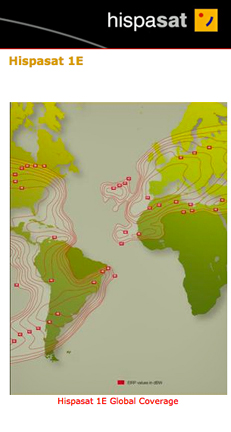 [SatNews] HISPASAT, the Spanish satellite communications operator, has unveiled its new Ultra High Definition (UHD) satellite television channel, HISPASAT 4K, at the IBC 2013 conference in Amsterdam.
[SatNews] HISPASAT, the Spanish satellite communications operator, has unveiled its new Ultra High Definition (UHD) satellite television channel, HISPASAT 4K, at the IBC 2013 conference in Amsterdam.
The company will immediately begin permanent, unscrambled satellite transmissions of the channel, making it available to the industry to perform tests and develop advanced solutions for new video formats. In doing so, its aim is to contribute to the generation of content in this format, and boost the development of this technology to be able to roll it out for viewers as soon as possible.The HISPASAT 4K channel will enable UHD content to be broadcast. The first broadcast will be a 50 minute documentary on the Prado Museum, produced by Televisión Española (RTVE) and co-produced by HISPASAT.
First to air during the channel's launch was a summary of the documentary, which will soon premier at the San Sebastian Film Festival. The event was attended by Xavier Redón, Product Manager at Abertis Telecom; Eric Gallier, Thomson's Vice President of Marketing; and Pere Vila, Director of Technological Innovation and Planning at RTVE. These companies along with LG are HISPASAT's partners on this project.
HISPASAT's Business Director, Ignacio Sanchis, presented the channel, underlining the high definition and precision of the UHD broadcasts of the museum's works of art and the extent to which the technology faithfully reproduces the volumes, textures and colors of the paintings it exhibits. This clarity and precision “is essential to transmitting a true representation of these works to the viewer and are also important when viewing nature, architecture and sports events.”
Sanchis indicated that “the satellite represents an ideal platform for developing UHD services due to its universal footprint, high capacity and large bandwidth; essential for transmitting large amounts of high-definition data”, and emphasized that HISPASAT has been a pioneer in UHD satellite transmissions, having emitted 4K-quality broadcasts in Brazil, Spain and a number of other European countries.
The new channel will be broadcast in MPEG-4 at a speed of 35Mbps, and—in experimental format—in the new High Efficiency Video Coding (HEVEC) format at a speed of 18Mbps. This will make the satellite transmission system the most efficient anywhere in the world at present. Content, coded in these formats, will be broadcast pursuant to the DVB-S2 standard by the Hispasat 1E satellite, offering coverage across Europe. It is also planned that transmissions will begin in North America and Latin America in a few months.
Ultra High Definition (or 4K) television offers four times as many pixels as on a high-definition screen. The resolution is therefore four times higher that of conventional high definition, providing a sharpness that gives viewers an extremely high perception of image quality. This content can be broadcast thanks to the power of HISPASAT's satellites, thanks to their design aimed at DTH services.

